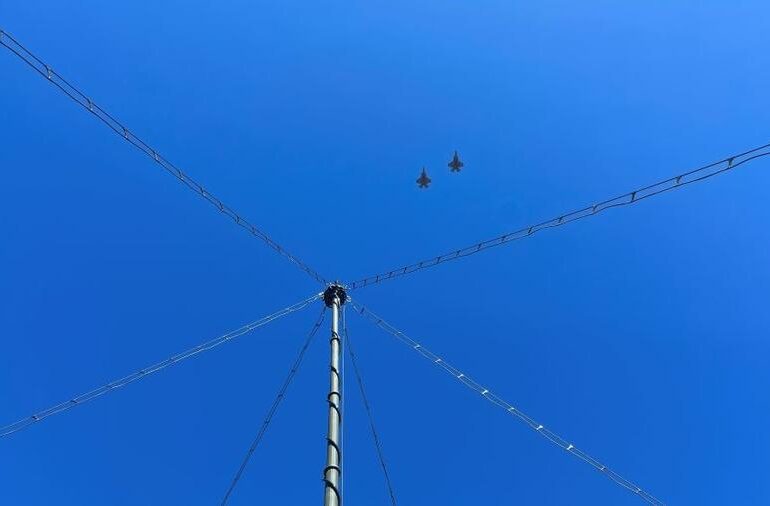Leidos demonstrated the Marine Expeditionary Long-Range Persistent Surveillance (MELPS) prototype at last year’s Project Convergence 2022 in the San Diego area. Photo: Leidos
The Leidos Dynetics Group is developing advanced sensors for the U.S. Marine Corps to detect airborne threats like enemy planes, cruise missiles and unmanned aircraft.
Why you should know: An innovative technology approach allows these systems to sense enemy threats without emitting electromagnetic signals that may give away their location.
Matt Becker, Leidos Vice President and Division Manager for Integrated Tech Solutions, said these systems are especially useful for troops in forward deployed and vulnerable locations.
- “The Marines have formidable sensors that do their job very well,” Becker said, “but many of their current sensors use high-power radars, making them susceptible to detection and attack the moment they’re used. Any time large radars are energized, they become a high-valued target by a peer or near-peer adversary, so the Marines are very careful and selective about when to turn them on when operating in a contested environment.”
Details: Based on the company’s Army Long Range Persistent Surveillance (ALPS) system, Becker’s team, working with the Leidos Innovations Center, is developing the new Marine Expeditionary Long-range Persistent Surveillance (MELPS) system, a 360-degree field of view sensor that combines digitized antennas and receivers with sophisticated signal processing techniques to provide a persistent, high-quality air picture with no detectable electromagnetic footprint.
Becker said systems like MELPS also address the limitations of current systems because they’re easily transportable and rapidly deployable.
Background: Becker said the underlying technology and hardware designs for ALPS and MELPS have developed over many years on various iterations and prototypes.
- “This new class of sensors is powered by emerging technology like GPU-based high-performance computing that allows them to process a significant workload while minimizing latency, as well as algorithmic advances to process large amounts of sensor data in real time,” he said. “They provide excellent, wide-area surveillance coverage for all classes of air-breathing targets. They perform their missions well in operational environments, and we’ve received very good feedback from our customers and system users.”

